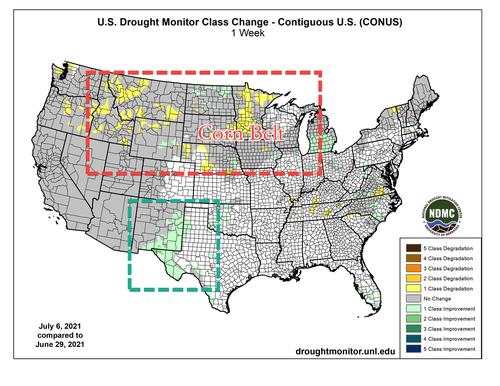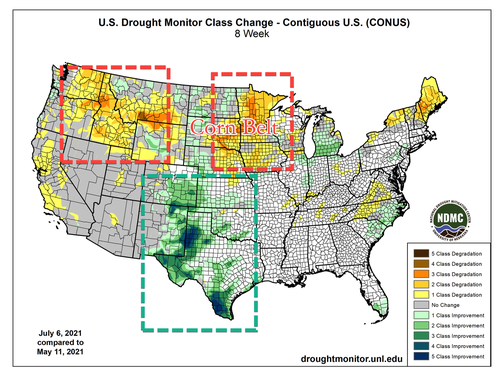Dry Corn Belt Ahead Of Pollination May Spell Disaster For Farmers
Kirk Hinz, a meteorologist with BAMWX, published an agriculture note Thursday which outlines “persisting rains” in some parts of the Southwest but “expanding dryness” in the north.
Hinz concentrates on the corn belt, which spans the Midwest. He said, “expanding drought into a crucial time of the year ahead of pollination.” This means that persistent dry conditions could affect pollination success – and if pollination is not successful this year because of drought and lack of water, then harvest yields this season could come under pressure.
“A lack of consistent rainfall across a big chunk of the US major corn production areas in the Midwest and northern Plains this year continues, with the expanding drought into a crucial time of the year ahead of pollination as well. Weather models have remained volatile recently in regards to how much of these major production areas will receive timely rainfall, but the trend recently has been to push previously forecast widespread nourishing rains further south that’s starting to be a growing concern (plus more heat building back in a mid-to-late month) ahead,” Hinz wrote.
Here’s what happens to corn if pollination is unsuccessful.
Here’s the US Drought Monitor, which shows much of the Western US is in some form of drought.
Some rain relief was seen in the week ending June 6, but worsening conditions continue in the corn belt (or Midwest area).
For the four weeks ending June 6, rains increased in west Texas and east New Mexico but expanding dryness in the corn belt.
Over the last two months ending June 6, significant increases in precipitation have been seen from Texas to New Mexico up into Colorado. However, most of the corn belt continues to experience worsening droughts.
Despite improving conditions in the Southwest, the corn belt remains in a drought during the most crucial time of the year for corn development. If pollination becomes an issue, harvests could suffer across the corn belt. That would mean corn prices would remain elevated.
Tyler Durden
Thu, 07/08/2021 – 17:20![]()
Zero Hedge’s mission is to widen the scope of financial, economic and political information available to the professional investing public, to skeptically examine and, where necessary, attack the flaccid institution that financial journalism has become, to liberate oppressed knowledge, to provide analysis uninhibited by political constraint and to facilitate information’s unending quest for freedom. Visit https://www.zerohedge.com




